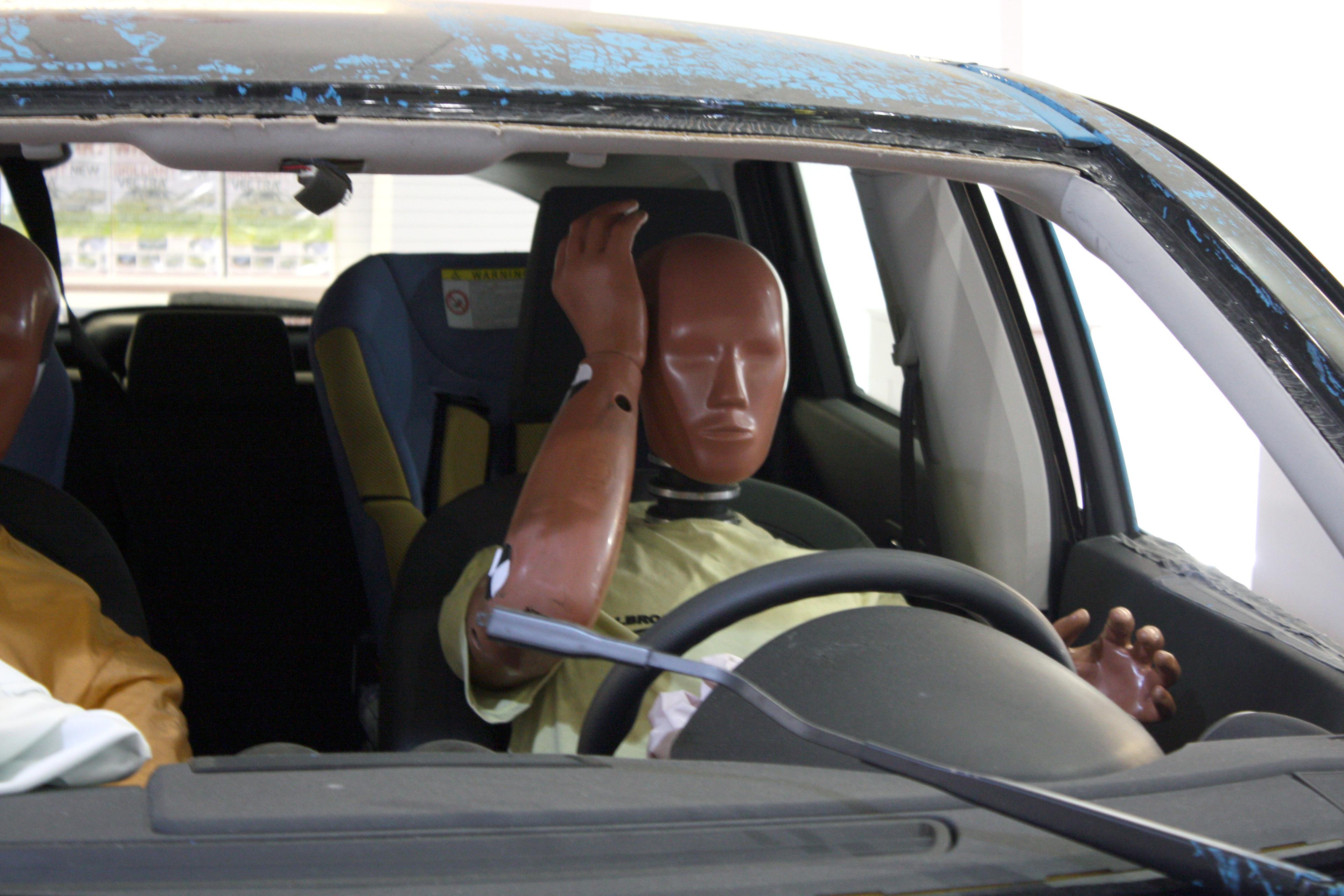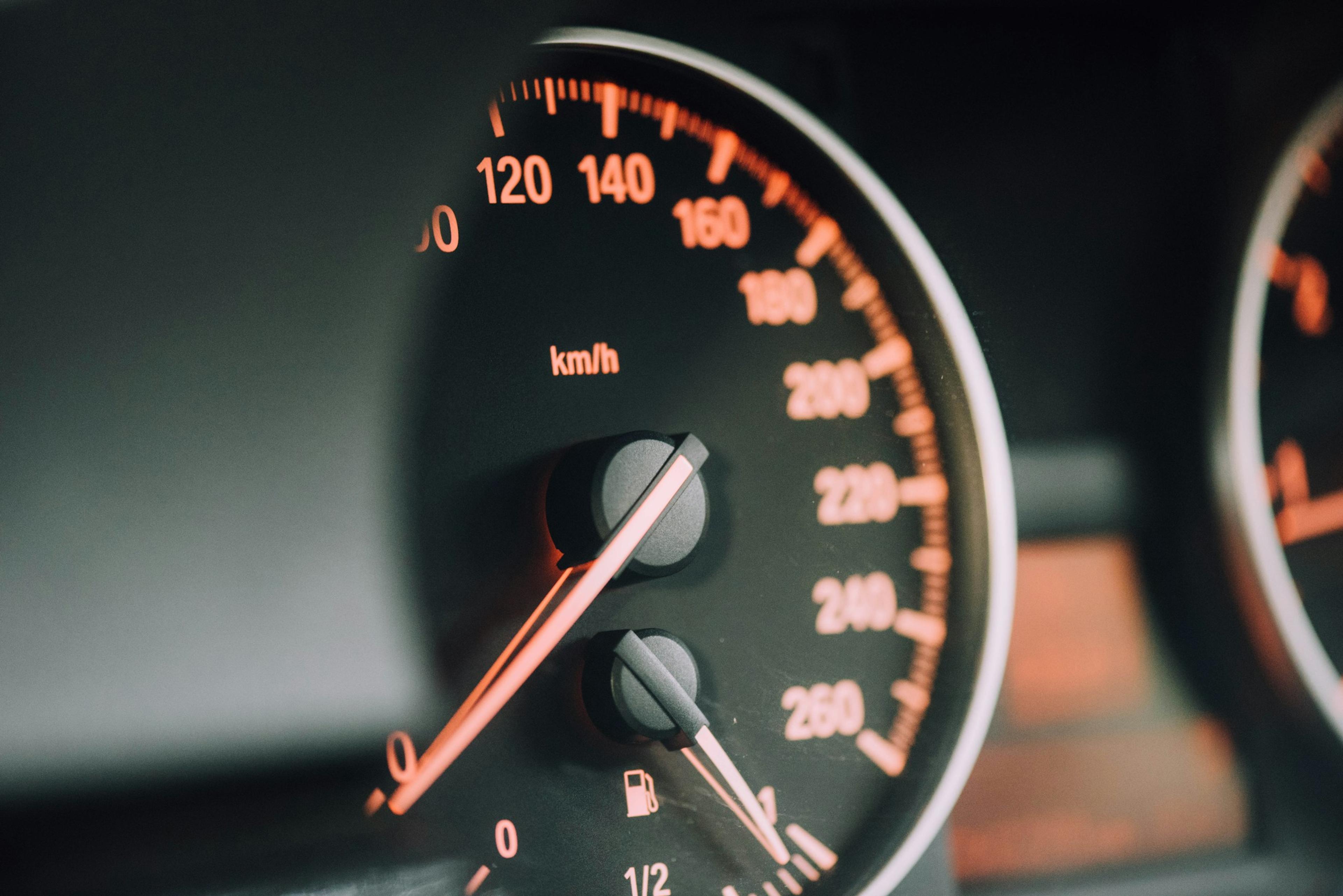11/07/2024
What is Euro NCAP, and how does it relate to car safety?

Karolis Bareckas

From convertibles to large SUVs – every car has to ensure a certain level of safety so that the driver and passengers are protected in a collision. Some car manufacturers conduct their own crash tests to design and promote better safety systems, but there are also organizations that assess car safety performance and provide unbiased vehicle ratings – such as Euro NCAP. Let's delve into what NCAP car safety ratings mean and how they contribute to making cars safer.
What is Euro NCAP?
Euro NCAP (European New Car Assessment Program) is an independent car safety testing association established to encourage car makers to produce safer cars and provide buyers with more details about the vehicle’s safety. The term “NCAP” was created in 1978 by the United States National Highway Traffic Safety Administration, but European NCAP was established in 1996.
Euro NCAP tests adult and child occupant protection, pedestrian safety, and safety-assist features to evaluate a car's performance in various situations. It also educates the public about vehicle safety and provides detailed reports on respective features. The test vehicles are bought anonymously from dealerships – they’re not supplied by manufacturers.
Multiple NCAPs exist worldwide, including in Asia, Australia, Europe, Latin America, and the US:
- The Australasian New Car Assessment Program (ANCAP)
- New Car Assessment Program for Southeast Asia (ASEAN NCAP)
- The China New Car Assessment Program (China NCAP)
- The European New Car Assessment Programme (EURO NCAP)
- Global New Car Assessment Programme (Global NCAP)
- Insurance Institute for Highway Safety (IIHS)
- Japan New Car Assessment Program (Japan NCAP)
- Korean New Car Assessment Program (Korean NCAP)
- Latin New Car Assessment Program (Latin NCAP)
- National Highway Traffic Safety Administration (NHTSA)
- Bharat New Car Assessment Program (Bharat NCAP)

Looks can be deceiving!
Don't risk your safety - check it with carVertical first
How to understand the 5-star safety rating
NCAP organizations publish car safety reports based on their performance in crash tests and typically give them a safety rating from 0 or 1 to 5 stars. In any case, the higher the safety rating of your vehicle is, the safer you are.
Let’s break down the 5-star rating system:
- 5 stars. A vehicle is equipped with comprehensive and robust crash avoidance technology, ensuring a high level of safety in various scenarios. This makes it an excellent choice for safety-conscious drivers.
- 4 stars. Good overall performance in crash protection. A vehicle may include additional crash avoidance technology, making it a reliable option for those seeking a balance of safety and technology.
- 3 stars. A vehicle offers at least average occupant protection. However, it may not always come equipped with the latest crash avoidance features. It provides a standard level of safety suitable for general use.
- 2 stars. A vehicle lacks advanced crash avoidance technology. It provides basic safety but falls short in offering comprehensive protective features.
- 1 star. Marginal crash protection. A vehicle offers very few crash avoidance features, making it a less desirable option for those prioritizing safety.
- 0 star. A vehicle lacks critical modern safety technology but can still be sold.
A poor safety rating also damages the manufacturer’s reputation and could lead to low sales. Therefore, after an unsuccessful test, such cars usually receive a safety upgrade to attract customers. However, Euro NCAP organizations don't have the capacity to test every model on the market and all of its variants, so they only pick more popular vehicles.
Understanding the Euro NCAP's role in car safety

All the results of tests performed by Euro NCAP organizations in different countries are available to the general public. You can hop on the Euro NCAP website and see how safe the car you’re interested in is. They provide detailed reports about a vehicle’s safety, including videos from crash tests, safety equipment lists, and several types of safety scores.
Many car buyers prioritize safety, so manufacturers of cars with 5-star ratings use this evaluation as a marketing tool. In that case, if a vehicle receives a poor Euro NCAP rating, the sales can drop significantly. However, since people may have very different needs and priorities, this doesn’t apply to all models.
Car manufacturers take these tests seriously and usually try to improve their cars for a better rating next time.
Exploring vehicle safety standards and crash tests

Euro NCAP car safety ratings primarily focus on four key areas, representing essential safety standards that every car model must meet to achieve a higher score.
Adult occupant protection
The Euro NCAP’s adult occupant protection score gives a comprehensive overview of how well a vehicle can protect adult drivers and passengers in various crash scenarios.
Tests performed:
- Frontal impact (mobile progressive deformable barrier and full-width rigid barrier);
- Lateral impact (side mobile barrier, side pole, and far-side impact);
- Rear impact (whiplash);
- Rescue and extrication.
Child occupant protection
Euro NCAP tests typically use dummies representing 6 and 10-year-old children to evaluate how well they’re protected during a crash. A selection of popular child restraint systems (CRS) is installed to ensure they can be easily and correctly fitted.
Tests performed:
- Child restraint system;
- Safety features (including seat belt length, belt buckle location, ISOFIX anchorage accessibility, and CRS stability);
- CRS installation check.
Pedestrian and vulnerable road user protection
These Euro NCAP tests evaluate how a car’s safety features protect pedestrians, cyclists, and other road users. During the test, a dummy appears in the middle of the road to assess the effectiveness of the automatic braking system. The tests are conducted under both daytime and nighttime driving conditions. Additionally, road user detection is tested while the car drives in reverse.
Tests performed:
- Head impact;
- Leg impact;
- Pelvis impact;
- Autonomous emergency braking (pedestrian);
- Autonomous emergency braking (cyclist);
- Cyclist dooring prevention;
- Autonomous emergency braking / Lane support motorcyclist.
Safety assist features
All modern cars have safety technologies that mitigate the risk of accidents. NCAP tests imitate various accident scenarios and assess how effectively occupant status monitoring, lane support, speed assistance, electronic stability control, and other features do their job.
Tests performed:
- Autonomous emergency braking (car-to-car);
- Occupant status monitoring;
- Speed assistance;
- Lane support.
But it’s important to note that these safety tests are only relevant if the vehicle wasn’t in a major accident. Once the car sustains structural damage, it may have weak spots, even after repairs. That’s why identifying previously damaged vehicles is essential.
The importance of safety ratings

Safety should be one of the main concerns when buying a vehicle, but some people still focus more on aesthetics and infotainment systems. Euro NCAP car safety ratings provide a quick and free way to evaluate the effectiveness of safety features and other circumstances.
Enhanced vehicle safety
Manufacturers try to innovate their safety technologies to get a better rating, as this directly affects their sales. The 5-star rating system also brought more car safety standards into the industry, and all manufacturers incorporate them into their models.
Reduced fatality rates
Euro NCAP tests have had a massive impact on the automotive industry, saving the lives of thousands of people every year. According to the Euro NCAP reports, over 78,000 lives have been saved over the 20 years of testing the safety of new cars. This includes drivers, passengers, and other road users like cyclists and pedestrians.
Lower insurance costs
Cars with rich safety features and a 5-star rating may qualify for a lower insurance price. Since advanced safety technologies correlate with lower chances of getting into accidents, some insurance companies may apply lower rates.
Benefits of NCAP safety ratings for consumers
While most people don’t know their car’s safety rating, getting familiar with NCAP tests can make the vehicle buying process smoother. Here’s how NCAP car safety ratings benefit you.
Informed decision-making
NCAP safety ratings provide consumers with valuable information about vehicle safety features and performance, enabling them to make informed decisions when purchasing a car. Buyers can learn if the vehicle they’re interested in is safe to drive and has the latest safety technology.
When buying a used car, relying on crash test information and safety ratings isn’t enough. Even the safest vehicles with 5-star ratings can be involved in accidents, which can damage their frame, suspension, engine, airbags, and more.
That’s why we recommend complementing the Euro NCAP test scores with carVertical’s history report to learn if the car has been damaged in the past. The history report also contains other valuable information, such as mileage and theft records, technical specifications, ownership changes, photos, and more. The benefits of NCAP safety ratings for consumers are obvious, but combining them with a history report mitigates the risk of buying a car in poor condition.

Increased awareness of vehicle safety features
NCAP car safety ratings help drivers make more safety-focused decisions when looking for another car. Since NCAP tests provide various crash test videos and safety information, this allows buyers to avoid unsafe vehicles.
Buyers can also compare the safety features of different cars to understand the latest technologies that may benefit them.

Check your registration number
Avoid costly problems by checking a vehicle's history. Get a report instantly!
Frequently asked questions

Article by
Karolis Bareckas
Karolis is an automotive writer focusing on the industry part of things. His goal is to educate readers and foster transparency in the used car market. With a passion for storytelling and extensive experience writing in a variety of fields, Karolis enjoys sharing his knowledge and spreading the word about automotive and tech topics. He’s also a a big fan of muscle cars and long road trips.
